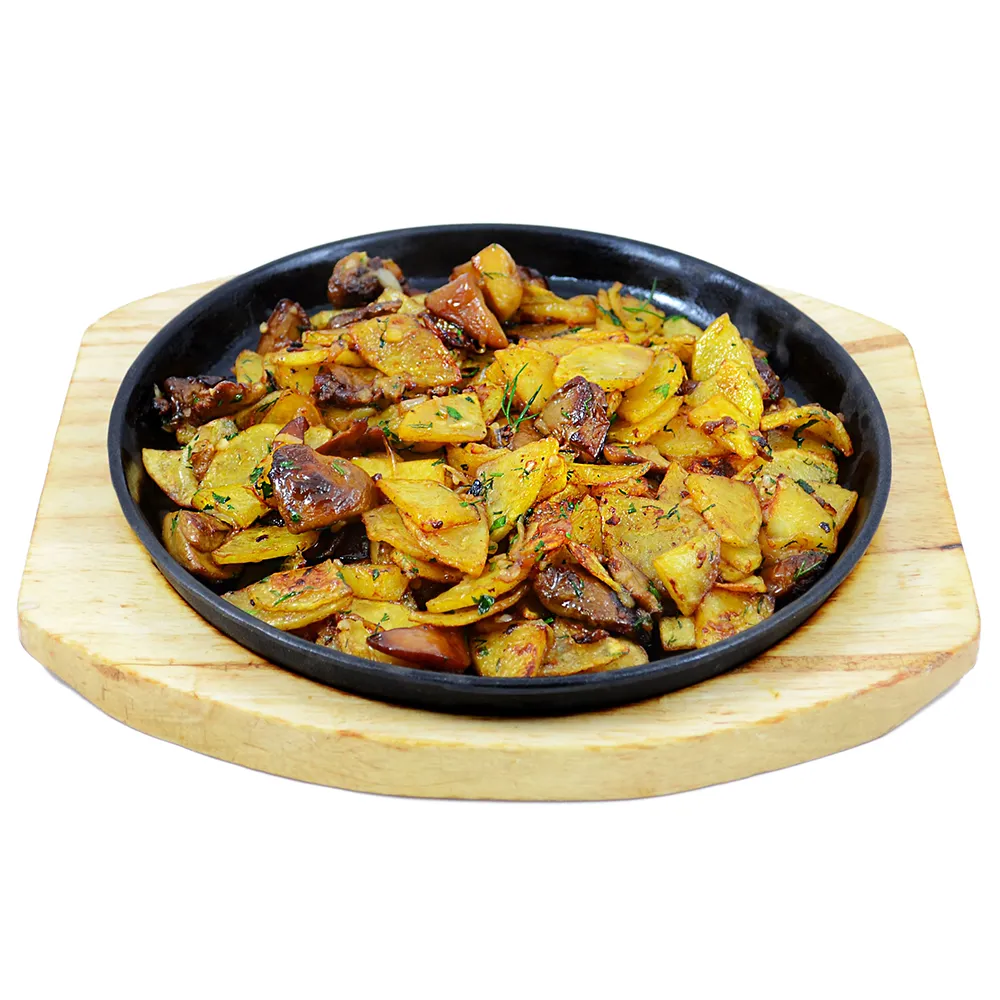
| Glycemic Index | Glycemic Load |
95.0
|
19.1
|
The glycemic index (GI) of fried potato equals to 95.0, which classifies it as a high GI food. The glycemic load (GL) of fried potato is equal to 19.1, which classifies it as a moderate GL food.
| Nutrition Facts | |
| Calories (kcal) | 149.0 |
| Carbohydrates (g) | 20.1 |
| Proteins (g) | 2.8 |
| Fats (g) | 7.0 |
100 grams of fried potato contain 149.0 kcal (623 kJ), 2.8 grams of proteins, 20.1 grams of carbohydrates, and 7.0 grams of fats.
Fried potato is a popular snack or side dish, enjoyed around the world. It is prepared by deep frying peeled and sliced potatoes until they become golden brown and crispy. Depending on how it’s cooked, fried potato can contain high amounts of fat, calories, sodium and cholesterol. Nutritionally speaking, fried potatoes do not have many essential vitamins or minerals. However they are high in carbohydrates which helps provide energy to fuel our bodies throughout the day. Fried potatoes also contain some potassium which plays an important role in helping muscles function properly as well as maintaining fluid balance in cells within our body’s organs. The pros of eating fried potatoes include its enjoyable taste that makes it easy to eat large portions of them at once; plus this type of food is widely available at most fast-food restaurants making it convenient for busy lifestyles when time does not allow for home cooking from scratch . The cons however involve the unhealthy nature associated with their preparation method: deep frying increases saturated fats content leading to potential health issues such as obesity, heart disease, diabetes over time if consumed regularly without moderation. In conclusion, while delicious tasting, fried potato should be eaten sparingly due to its lack of nutritional benefits compared with more balanced meals that use natural ingredients instead.


